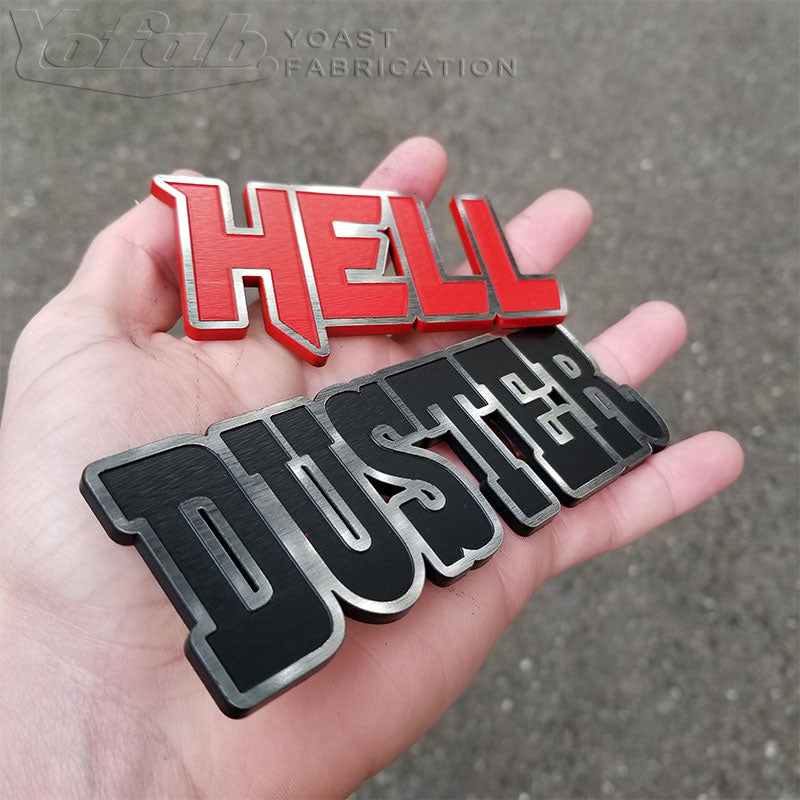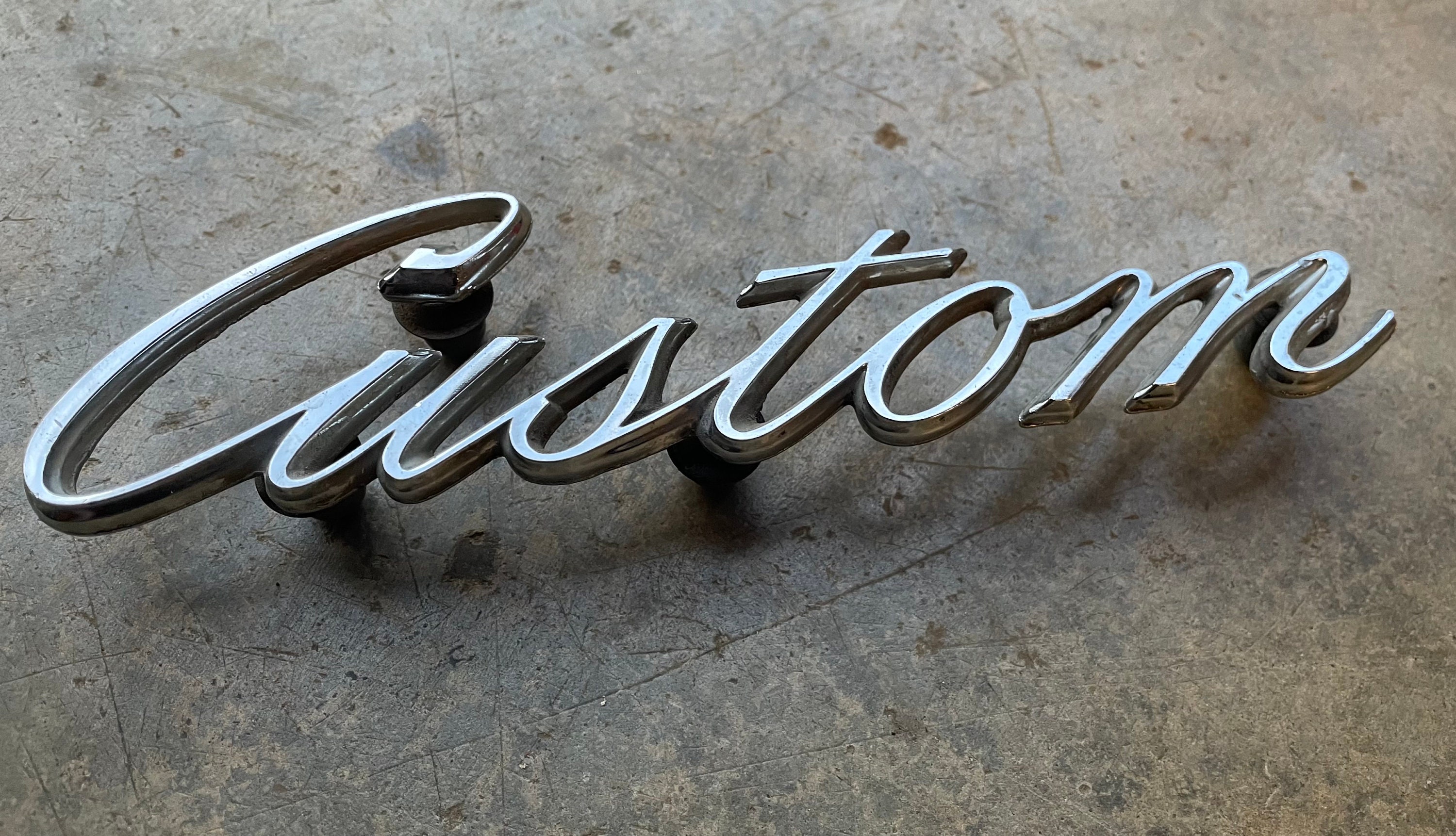Attract attention with a Custom Emblem Crafted for Originality
Attract attention with a Custom Emblem Crafted for Originality
Blog Article
Producing an Enduring Impression With Personalized Emblems: Layout Tips and Ideas
The production of a personalized symbol is a critical action in developing a brand's identification, yet many overlook the nuances that add to its efficiency (Custom Emblem). A well-executed layout not only connects core values but also reverberates with target market on several levels. Concentrating on aspects such as shade choice, typography, and symbolic importance can improve the emblem's influence. As we check out these vital components, it comes to be clear that there is even more to crafting an emblem than mere aesthetic appeals; understanding these principles can transform your strategy to brand representation. What crucial facets should be prioritized for maximum impact?
Recognizing Your Brand Name Identification
Understanding your brand identification is crucial for developing custom-made symbols that reverberate with your target market. Your brand name identification encompasses the worths, goal, and individuality that specify your organization. It works as the foundation for all graphes, including custom-made emblems. By clearly expressing what your brand name represents, you can guarantee that the style aspects of your emblem mirror these core concepts.

Following, recognize essential characteristics of your brand, such as technology, individuality, or integrity. These characteristics should guide the style procedure, affecting forms, signs, and typography. A well-defined brand identification not just help in developing a remarkable symbol yet likewise cultivates brand loyalty and acknowledgment. Eventually, a symbol that really mirrors your brand name identity will develop a purposeful link with your target market, strengthening your message and enhancing your overall brand name method.
Selecting the Right Colors
Picking the right shades for your custom symbol plays a critical role in sharing your brand name's identification and message. Shades evoke emotions and can substantially influence assumptions, making it necessary to choose shades that reverberate with your target market. Begin by thinking about the psychological impact of colors; for example, blue often shares trust and professionalism, while red can evoke excitement and necessity.
It is additionally important to straighten your color options with your brand name's values and industry. A technology firm may select great shades, such as blues and eco-friendlies, to show advancement and dependability, whereas an innovative firm may welcome vibrant and vibrant colors to display creativity and energy.
Additionally, consider the color harmony in your layout. Using a color wheel can help you identify corresponding or analogous colors that create aesthetic equilibrium. Objective for a maximum of three key colors to maintain simpleness and memorability.
Typography and Font Style Option
A well-chosen font style can substantially improve the effect of your customized symbol, making typography and font style choice critical parts of the design procedure. The font style ought to align with the brand's identity, sharing the proper tone and message. A modern sans-serif font might stimulate a sense of innovation and simpleness, while a traditional serif typeface can interact custom and reliability.
When picking a font style, consider clarity and scalability. Your navigate to this website symbol will certainly be made use of across different media, from business cards to signboards, so the font should stay clear at any dimension. Furthermore, avoid extremely decorative typefaces that may interfere with the total design and message.
Combining fonts can also develop visual rate of interest but calls for cautious pairing. Custom Emblem. A common technique is to use a vibrant typeface for the main text and a complementary lighter one for second components. Uniformity is key; restrict your choice to 2 or three fonts to maintain a natural look
Integrating Meaningful Icons

For example, a tree may represent development and security, while a gear could signify development and precision. The trick is to make sure that the icons reverberate with your target audience and show your brand's goal. Participate in brainstorming sessions to discover numerous ideas and collect input from varied stakeholders, as this can yield a richer variety of choices.
Furthermore, think about how these icons will certainly work in conjunction with other style elements, such as colors and typography, to produce a cohesive and impactful emblem - Custom Emblem. Eventually, the ideal icons can boost acknowledgment and cultivate a stronger emotional connection with your audience, making your brand memorable and meaningful.
Guaranteeing Flexibility and Scalability
Making sure that your custom-made symbol is scalable and flexible is crucial for its efficiency across different applications and mediums. A well-designed emblem should keep its honesty and aesthetic charm whether it's shown on a calling card, a site, or a large banner. To achieve this, concentrate on developing a style that is easy yet impactful, preventing intricate information that might end up being lost at smaller dimensions.

Examining your symbol in various layouts and sizes is essential. Assess just how it does on different histories and in different environments to guarantee it remains well-known and efficient. By why not try these out prioritizing convenience and scalability in your style process, you will certainly create a symbol that stands the test of time and properly represents your brand throughout all touchpoints.

Final Thought
Finally, the development of custom emblems demands a tactical strategy that harmonizes different layout elements, consisting of brand name identity, color option, typography, and symbolic representation. Highlighting simpleness and scalability ensures that the emblem stays flexible across various applications, while purposeful symbols improve psychological vibration with the target market. By carefully integrating these elements, brand names can grow a distinctive identity that promotes acknowledgment and leaves a long-term impression on consumers.
A well-defined brand resource identity not just help in developing a remarkable emblem but also promotes brand name commitment and acknowledgment. Inevitably, a symbol that truly mirrors your brand name identification will certainly create a meaningful connection with your audience, reinforcing your message and enhancing your overall brand technique.
Choosing the best colors for your customized emblem plays a critical function in communicating your brand's identity and message. By prioritizing versatility and scalability in your design procedure, you will certainly develop a symbol that stands the examination of time and successfully represents your brand across all touchpoints.
In conclusion, the creation of personalized symbols demands a calculated technique that balances various design components, consisting of brand identity, shade option, typography, and symbolic depiction.
Report this page